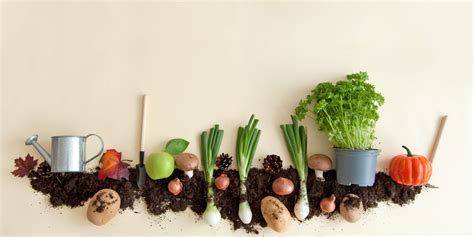The art of winemaking is deeply rooted in the nuances of gardening, as the quality of the grapes directly affects the final product. For winemakers and gardening enthusiasts alike, understanding the intricacies of grape cultivation is crucial for producing exceptional wine. In this comprehensive guide, we’ll delve into 10+ gardening tips to enhance wine quality, exploring the complexities of soil management, vineyard maintenance, and precision viticulture.
Soil Analysis and Management: The Foundation of Quality Grapes
Before planting, it’s essential to conduct a thorough soil analysis to determine the pH level, nutrient content, and microbial activity. This information will help you make informed decisions about fertilization, irrigation, and pest management. For instance, a pH level between 6.0 and 6.5 is ideal for most grape varieties, as it allows for optimal nutrient uptake and microbial growth.
To maintain soil health, consider implementing the following strategies:
- Crop Rotation and Cover Cropping: Rotate grapevines with other crops, such as legumes or grasses, to improve soil fertility, structure, and biodiversity. This approach also helps to break disease and pest cycles, reducing the need for chemical interventions.
- Composting and Mulching: Add organic matter to the soil through composting and mulching, which enhances soil biota, retains moisture, and regulates soil temperature. A mix of green and brown materials, such as grape pomace, straw, and wood chips, can create a nutrient-rich compost that supports healthy microbial growth.
- Minimize Tillage: Reduce soil disturbance by minimizing tillage, which helps preserve soil organic matter, reduces erosion, and promotes soil biota. This approach also reduces the risk of soil compaction, which can limit root growth and water infiltration.
Vineyard Maintenance: Pruning, Training, and Pest Management
Proper vineyard maintenance is crucial for promoting healthy vine growth, optimizing yields, and preventing disease. The following tips can help you achieve these goals:
- Pruning and Training: Prune grapevines annually to control yields, promote even ripening, and remove diseased or damaged wood. Train vines using a trellis system or other support structures to optimize sunlight exposure, air circulation, and fruiting zone management.
- Pest and Disease Management: Implement integrated pest management (IPM) strategies to minimize chemical use and protect beneficial insects. This approach may include introducing natural predators, using physical barriers, and applying organic pesticides as a last resort.
- Irrigation Management: Monitor soil moisture levels and adjust irrigation schedules accordingly to avoid water stress, which can impact grape quality and yields. Consider using precision irrigation systems, such as drip irrigation or soil moisture sensors, to optimize water use and reduce evaporation.
Precision Viticulture: Leveraging Technology for Optimal Grape Production
Precision viticulture involves using advanced technologies, such as satellite imaging, drones, and sensors, to monitor and manage vineyard conditions. This approach can help you:
- Monitoring and Analysis: Use data analytics and sensor technologies to track vine health, soil moisture, and weather conditions, enabling data-driven decisions and precision viticulture practices.
- Variable Rate Application: Apply fertilizers, pesticides, and irrigation water at variable rates based on soil type, vine vigor, and crop load, reducing waste and environmental impact.
- Precision Pruning: Utilize robotic pruning systems or precision pruning tools to optimize pruning efficiency, reduce labor costs, and improve grape quality.
Additional Tips for Enhancing Wine Quality
- Grape Variety Selection: Choose grape varieties well-suited to your climate, soil type, and winemaking style to ensure optimal flavor and aroma profiles.
- Climate Resilience: Implement climate-resilient practices, such as using drought-tolerant rootstocks, to mitigate the effects of climate change on grape production.
- Biodiversity and Ecological Balance: Promote biodiversity in the vineyard by maintaining ecological balance, which can lead to improved grape quality, reduced pest pressure, and enhanced ecosystem services.
By incorporating these 10+ gardening tips into your viticulture practices, you’ll be well on your way to producing high-quality grapes and exceptional wine. Remember to stay up-to-date with the latest research, technologies, and best practices in grape cultivation to continuously improve your winemaking skills.
What is the ideal soil pH for grape cultivation?
+The ideal soil pH for grape cultivation is between 6.0 and 6.5, as this range allows for optimal nutrient uptake and microbial growth.
How can I promote biodiversity in my vineyard?
+Promote biodiversity in your vineyard by maintaining ecological balance, using cover crops, and introducing beneficial insects. This approach can lead to improved grape quality, reduced pest pressure, and enhanced ecosystem services.
What is precision viticulture, and how can it benefit my winemaking practices?
+Precision viticulture involves using advanced technologies, such as satellite imaging, drones, and sensors, to monitor and manage vineyard conditions. This approach can help you make data-driven decisions, optimize grape production, and improve wine quality.
In conclusion, the art of winemaking begins in the vineyard, where careful attention to detail, precision viticulture, and a deep understanding of grape cultivation can make all the difference in producing exceptional wine. By embracing these 10+ gardening tips and staying committed to continuous improvement, you’ll be well on your way to crafting wines that showcase the full potential of your grapes and delight the senses of wine enthusiasts worldwide.



